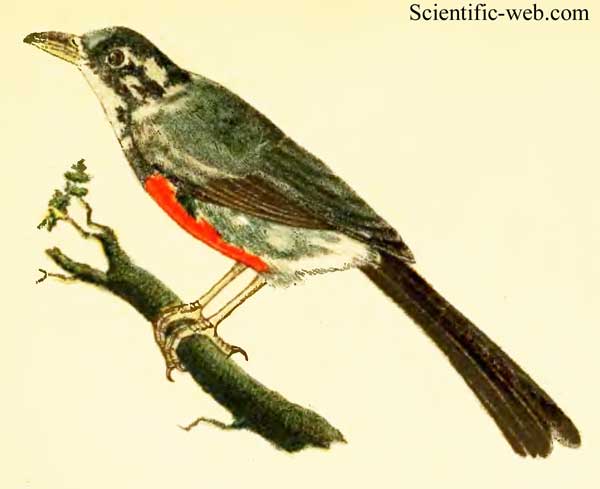
Cladus: Unikonta
Cladus: Opisthokonta
Cladus: Holozoa
Regnum: Animalia
Subregnum: Eumetazoa
Cladus: Bilateria
Cladus: Nephrozoa
Superphylum: Deuterostomia
Phylum: Chordata
Subphylum: Vertebrata
Infraphylum: Gnathostomata
Megaclassis: Osteichthyes
Cladus: Sarcopterygii
Cladus: Rhipidistia
Cladus: Tetrapodomorpha
Cladus: Eotetrapodiformes
Cladus: Elpistostegalia
Superclassis: Tetrapoda
Cladus: Reptiliomorpha
Cladus: Amniota
Classis: Reptilia
Cladus: Eureptilia
Cladus: Romeriida
Subclassis: Diapsida
Cladus: Sauria
Infraclassis: Archosauromorpha
Cladus: Crurotarsi
Divisio: Archosauria
Cladus: Avemetatarsalia
Cladus: Ornithodira
Subtaxon: Dinosauromorpha
Cladus: Dinosauriformes
Cladus: Dracohors
Cladus: Dinosauria
Ordo: Saurischia
Cladus: Eusaurischia
Subordo: Theropoda
Cladus: Neotheropoda
Cladus: Averostra
Cladus: Tetanurae
Cladus: Avetheropoda
Cladus: Coelurosauria
Cladus: Tyrannoraptora
Cladus: Maniraptoromorpha
Cladus: Maniraptoriformes
Cladus: Maniraptora
Cladus: Pennaraptora
Cladus: Paraves
Cladus: Eumaniraptora
Cladus: Avialae
Infraclassis: Aves
Cladus: Euavialae
Cladus: Avebrevicauda
Cladus: Pygostylia
Cladus: Ornithothoraces
Cladus: Ornithuromorpha
Cladus: Carinatae
Parvclassis: Neornithes
Cohors: Neognathae
Cladus: Neoaves
Cladus: Telluraves
Cladus: Australaves
Ordo: Passeriformes
Subordo: Passeri
Infraordo: Passerida
Superfamilia: Passeroidea
Familia: Cardinalidae
Genus: Granatellus
Species: Granatellus venustus
Subspecies: G. v. francescae – G. v. venustus
Name
Granatellus venustus Bonaparte, 1850
Type locality: Mexico; restricted to Comitan, Chiapas.
References
Bonaparte, C.L. 1850. Conspectus generum avium. Tome I. pp. [1–5], 1–543. Lugduni Batavorum (Leida). (E.J. Brill). p. 312 BHL Reference page.
Vernacular names
English: Red-breasted Chat
español: Reinita mexicana
The red-breasted chat (Granatellus venustus) is a species of bird in the family Cardinalidae, the cardinals or cardinal grosbeaks. It is endemic to Mexico.[2]
Taxonomy and systematics
The genus Granatellus was traditionally placed in family Parulidae, the New World warblers. Studies of DNA sequences in the early 2000s resulted in its being moved to its present family. The red-breasted chat and the other two members of its genus, gray-throated chat (G. sallaei) and rose-breasted chat (G. pelzelni) form a superspecies.[3][4]
The red-breasted chat has two subspecies, the nominate Granatellus venustus venustus and G. v. francescae.[2]
Description
The red-breasted chat is 14.5 to 16 cm (5.7 to 6.3 in) long; 12 specimens weighed between 10.2 and 11.4 g (0.36 and 0.40 oz). The adult nominate male's upperside is mostly bluish gray. Most of the face is black, though it has a broad white supercilium, and there is a black band across the chest. The chin, throat, sides, and flanks are white; the chest, lower breast, belly, and vent area are vermilion. The adult female's upperparts are slate gray. Most of its face is shades of buff and gray. Its breast and belly are buff and the vent area salmon pink.[4]
The immature male's head and upperparts are similar to those of the adult but with less black. The throat and underparts are whitish with a pink wash to the rear. The immature female is similar to the adult.[4]
Distribution and habitat
The nominate red-breasted chat is endemic to western Mexico. It is found year-round from Sinaloa south to the Isthmus of Tehuantepec and from there into interior Chiapas and possible into northern Guatemala, though there are no records there. It also occurs inland to Morelos along the Balsas River. G. v. francescae is restricted to Islas Marías off Nayarit. It primarily inhabits thorn forest and scrubby woodland and can be found in the understory of secondary forest and other heavy growth. In addition, the species has been reported in evergreen swamp forest inland of mangrove swamps and along rivers. In elevation it generally ranges from sea level to 1,200 m (3,900 ft) though locally it occurs as high as 1,600 m (5,200 ft).[4]
Behavior
Feeding
Little is known about the red-breasted chat's foraging habits or diet. It is assumed to eat insects and other arthropods.[4]
Breeding
The red-breasted chat breeds in the wet season, from May to September. Its nest is a cup made of Spanish moss and other fibers lined with finer material. The clutch size is two to four. Females alone incubated the nests but both sexes provided food to nestlings.[4]
Vocalization
The red-breasted chat's song is a repeated "variable, fairly sweet warble" [1]. Its call is a repeated "wet plek or plik" [2].[4]
Status
The IUCN has assessed the red-breasted chat as being of Least Concern.[1] However, it occurs in only two protected areas, and less than 20% of the original forest in its range remains intact.[4]
References
BirdLife International (2020). "Red-breasted Chat Granatellus venustus". IUCN Red List of Threatened Species. 2020. Retrieved 17 May 2021.
Gill, F.; Donsker, D.; Rasmussen, P. (January 2021). "IOC World Bird List (v 11.1)". Retrieved January 14, 2021.
Remsen, J. V., Jr., J. I. Areta, E. Bonaccorso, S. Claramunt, A. Jaramillo, D. F. Lane, J. F. Pacheco, M. B. Robbins, F. G. Stiles, and K. J. Zimmer. Version 19 January 2021. A classification of the bird species of South America. American Ornithological Society. https://www.museum.lsu.edu/~Remsen/SACCBaseline.htm retrieved January 19, 2021
Gulson, E. R. (2020). Red-breasted Chat (Granatellus venustus), version 1.0. In Birds of the World (T. S. Schulenberg, Editor). Cornell Lab of Ornithology, Ithaca, NY, USA. https://doi.org/10.2173/bow.rebcha1.01 retrieved May 17, 2021
Retrieved from "http://en.wikipedia.org/"
All text is available under the terms of the GNU Free Documentation License

